Insects display a wide variety of behavior, some of which is very unique.
Their responses are largely hereditary and automatic, and usually they aren’t learned. They respond to light; some are attracted, while others may be repelled. This often has to do with other pieces of their behavior. For example, an insect living inside of bark may avoid light, while a moth may fly to a flame (more on that later). Insects are very responsive to certain chemicals, as they may lead them to food, a mate, or an oviposition site (a place to lay eggs). These responses may change as environmental conditions change. A honeybee will have a positive reaction to light when it’s warm, but may have a negative reaction to light when the temperature is lower, likely a reaction to light reaching inside the hive.
The stimuli are sometimes quite specific. Moths are known for flying to candlelight. It turns out, males do this significantly more than females- the flickering flame is similar to infrared signals emitted from the thorax of female moths. Moths have even been observed trying to mate with candle flames!
Complex Behaviors
Although many insect behaviors appear well thought out, almost all of them are mechanical in nature. They are mostly automatic, and are performed the same way by all members of the species. The first time an insect does something will be just as well as the last time, there is no need for practice. These behaviors typically persist because they are evolutionary advantageous.
Insects possess a circadian rhythm. Some wake during the day, others the night, or both. These appear to be controlled mostly by environmental factors, such as the lower temperature and light values, however some insects do possess some form of internal rhythm, and show diurnal activity despite being placed in continuous light or darkness.
Are insects intelligent? That’s an abstract question, and certainly depends on your definition of intelligent. If it is defined as the capacity to modify behavior through experience, most insects have limited capacity to learn. Borror, De Long, and Triplehorn state there is little or no evidence to suggest they can think, however this seems outdated, and what it is “to think” is quite abstract. A recent study argues that insects may have subjective experience, a basic level of consciousnesses, called subjective experience. This is typically referred to as an ‘ego’, and basically means that you are the point of reference for your world. You can therefore reference other objects in relation to you. For example, I know that whether or not I am there, Evergreen is still existent some ways away. Additionally, insect brains are capable of action-target selection, processing sensory information, and executing command functions over the body. I would certainly argue that this is a form of intelligence, but you can make your own distinctions.
Locomotion: Leg joints may be dicondylic or monocondylic, meaning they have either one or two points of articulation. Dicondylic joints typically move through one plane while mono joints have more varied movements (think ball and socket). Legless larvae and caterpillars move by pushing their prolegs forward, with a wave passing through the body. Usually two or three segments are involved in this motion. Jumping insects are usually propelled by the hindlegs, except in springtails.
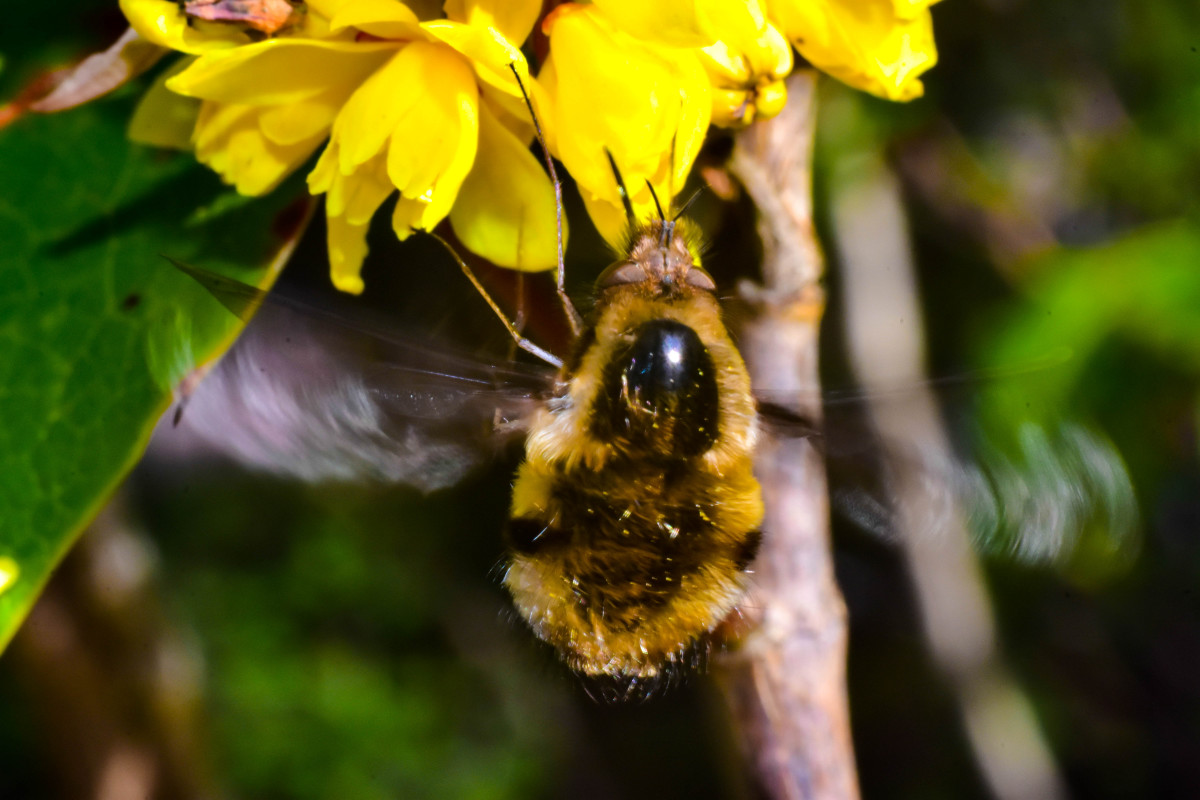
Flight: Flying is one of the most distinctive features of insects, and is one of the major reasons they are so distributed and widespread. The wing structures are deflated when they first appear after molting, and have heavily sclerotized veins that provide support. They are hollow, and contain blood, tracheae, and nerves. The base of the wings are membraneous, with sevaral articular sclerites. There are usually five paired muscle groups, the tergosternal, dorsal logitudinal, phramata, basalar, and axillary muscles. During movement, the fore and hindwings may be connected, or not. These movements are typically complex, and often move on many axes. They may fold, twist, or buckle, and often move in a figure eight motion. Forward flight is similar to a propeller; each wing draws air backwards, forming a low pressure zone above the insect, and a high pressure zone behind it. This creates lift and forward movement. The stroke rate may vary wildly. A butterfly could move at a few strokes per second while a fly may move its wings as much as 400 times per second. Flight speed is widely variable, with the upper limit usually being about 35 mph. Considering the relative body size, this is pretty incredible, and allows insects to quickly move many times the lengths of their own bodies.
Migrations: Usually, these are one way trips, with the next generation making the opposite migration. Monarchs are notorious for their trips, and have been observed flying as many as 1,870 miles, from Ontario to San Luis Potosi, Mexico. In the US, you can expect North to South migrations, with breeding typically occurring in the Southern areas.
Feeding Behaviors: Insects are generally phytophagus (herbivorous) or zoophagus (carnivorous), however there is certainly overlap within some species.
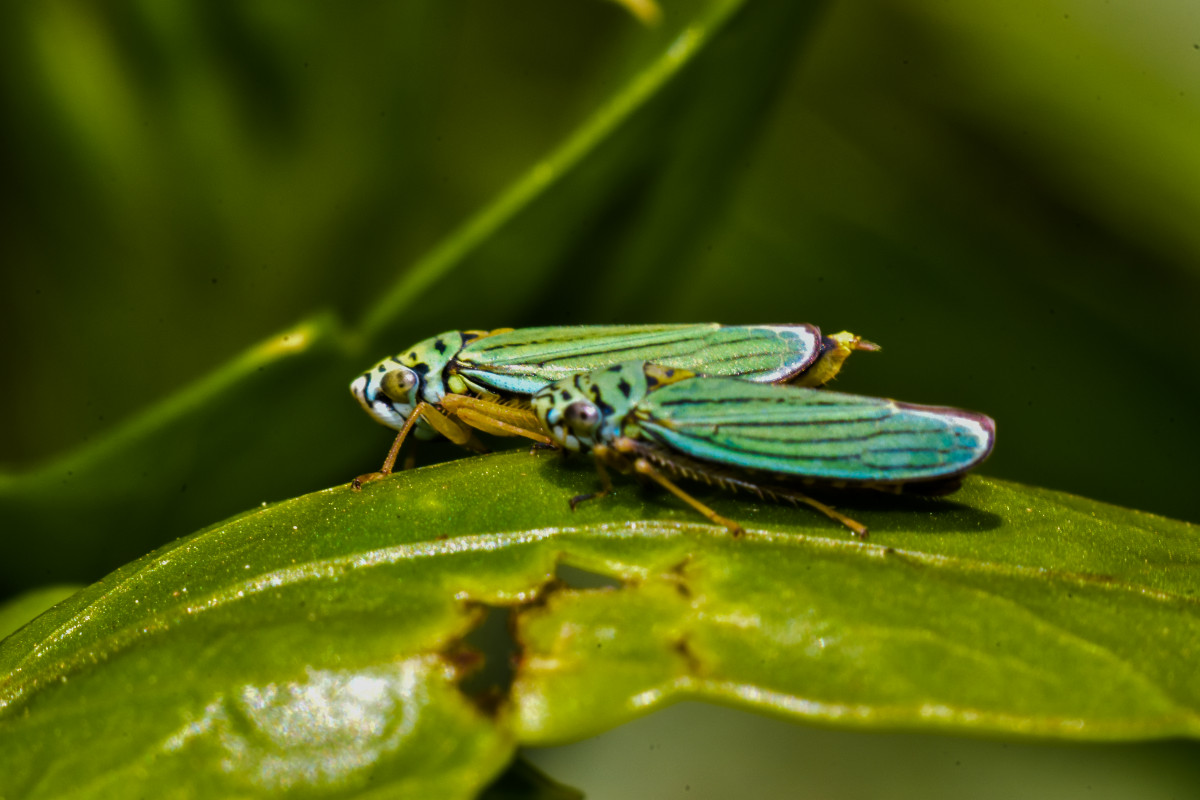
Phytophagus Insects eat plants, and almost all agriculture pests fall under this category. There are several approaches to this. Chewing mouthparts lead to holes or skeletonized leaves, and with a large enough population can lead to defoliage. Grasshoppers, sawflies, caterpillars, and beetles eat like this. Sucking insects usually cause a browning or spotting on leaves, or curling and wilting. Think of aphids, frogghoppers, and true bugs. Some feed between plant tissues, tunneling between two surfaces in the leaf; these are the leaf miners. Each species possess a different pattern, and many of these have been documented. Stem borers are typically larvae, and they bore into the stems, roots, or tubers of a plant.
There are some interesting, unique feeding behaviors as well. Certain ants, ambrosia beetles, and termites will use fungus to help digest their food. In these ant colonies, leaves are cut, then ‘seeded’ with fungus, which breaks down the leaves into something edible to the insect. When new queens leave to create colonies, they take a small amount of this fungus before leaving the colony. This is certainly food for thought when considering insect intelligence. Galls are another plant related behavior that I’m going to throw in here. A chemical is injected into the plant that makes it grow abnormally, producing a gall. Each species will have a different gall form. Typically the feeding larvae injects the chemical, however sometimes it is the ovipositing female.
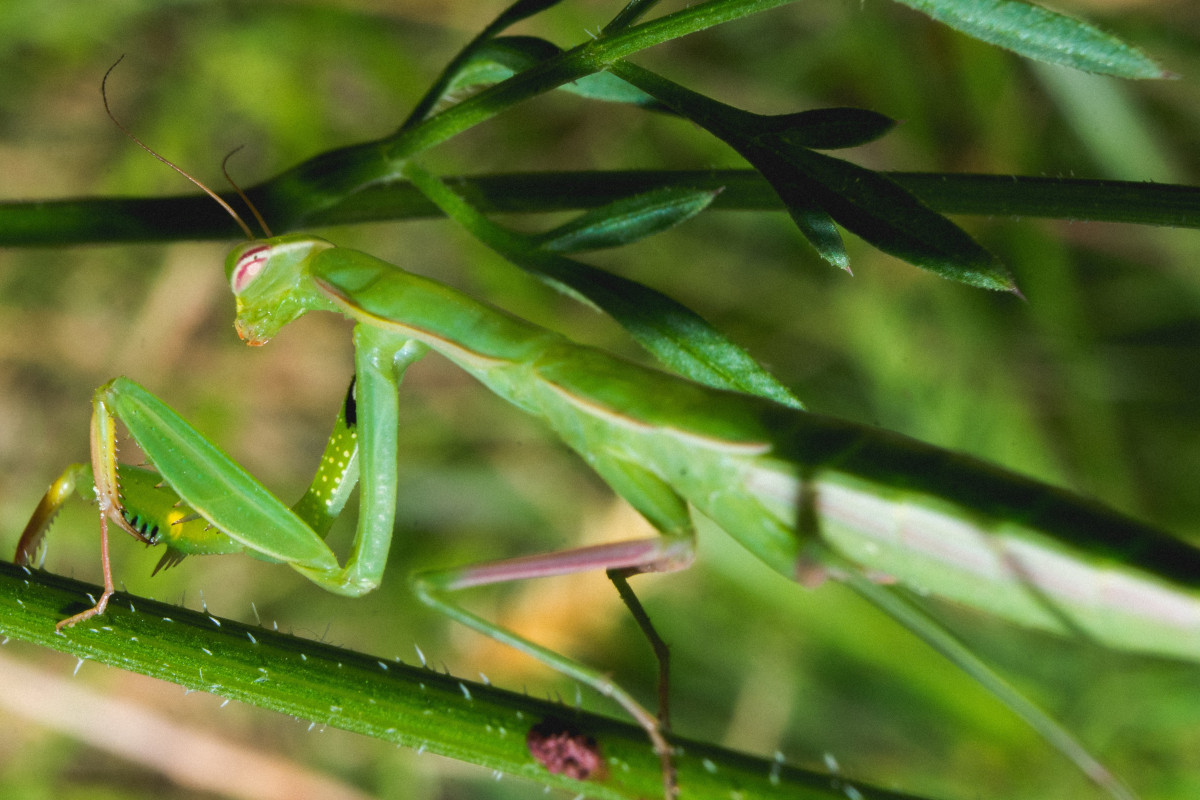
Zoophagus Insects are usually insect feeders, but not always. In agriculture, these are generally considered beneficial insects. It’s not always that simple, but usually if it eats pests and doesn’t bother plants, it’s good. There are two categories that usually have limited overlap: predators and parasites. Predators usually eat insects smaller than them, and typically consume them all at once. These are usually powerful, active insects. Parasites live inside or on a host, and live with them continually for at least some of their life cycle. If it is an insect parasite, it is generally known as a parasitoid. These generally do end up killing and consuming their hosts, unlike a flea or a tick that simply lives off of it.

Saprophagous insects are also notable, and these feed on dead or decaying plant and animal matter. This can include carrion, dung, leaf litter, dead logs, etc. Sometimes the insects don’t feed on the matter, but rather the microorganisms living in it. Dermatid beetles are a great example of this.
Defensive Behavior: A wide variety of defensive behaviors are displayed in insects. Some are passive, such as when a caterpillar plays dead when something encounters it. I have observed Noctuids (larvae and adult) displaying this very behavior. Other insects stay protected by hiding in shelters. Often they will burrow into plant and animal tissues, or underneath rocks, soil, or litter.
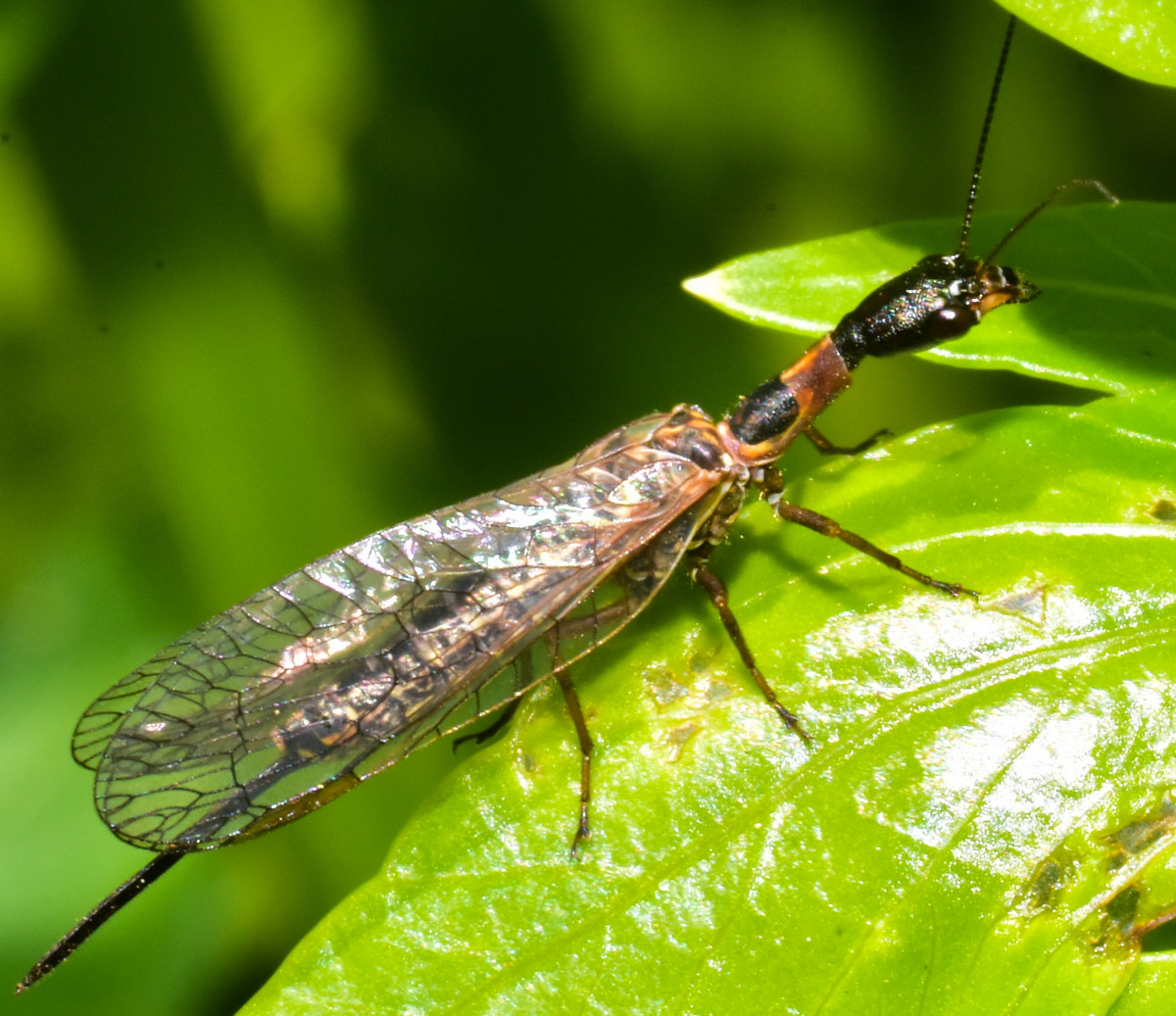
While this is sometimes effective, many parasitoids have specialized ovipositors that can pierce through surfaces, into the insects underneath. The snakefly pictured is a fantastic example of this, and pierces into insects inside downed logs. Some species defend themselves by constructing cases, Lepidoptera especially. Many Hymenoptera make homes for their larvae, usually enclosed with a food source (often paralyzed insects).
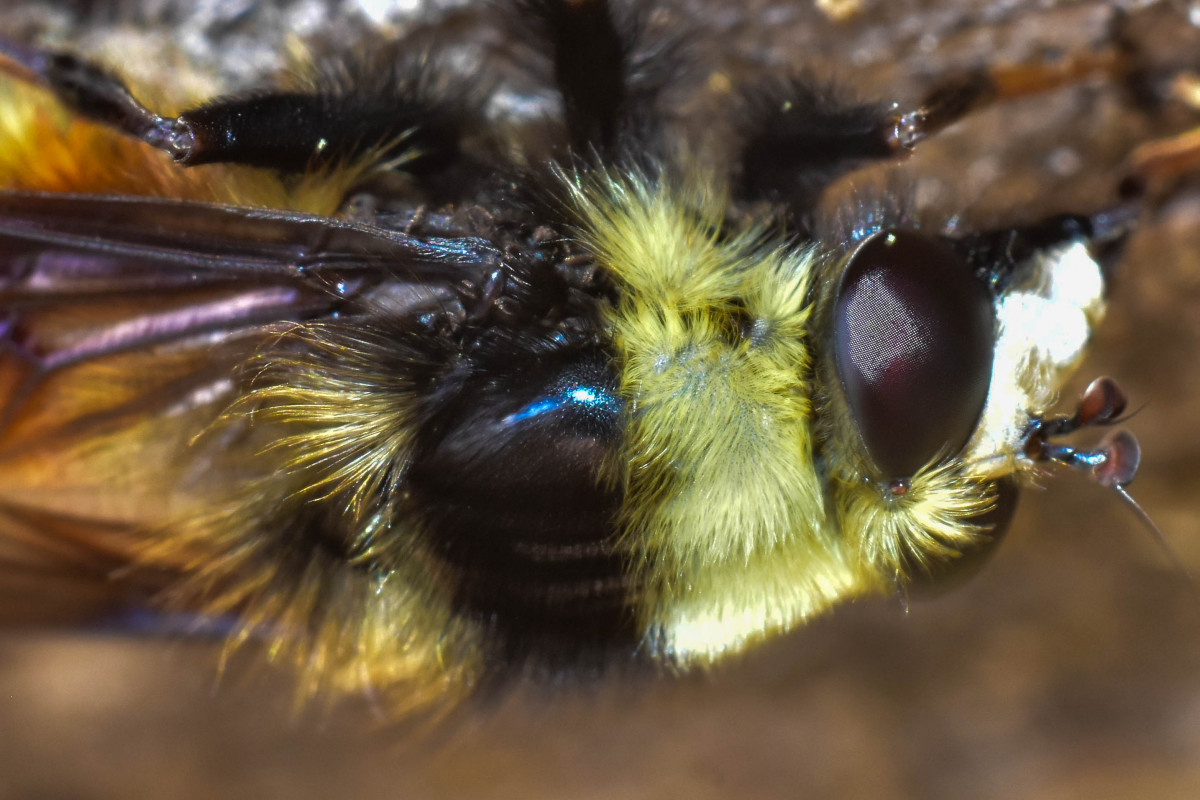
Camouflage is another viable strategy for many insects. By mimicking the colors and textures of their host plants, they can remain undetected to predators. Batesian mimicry is also common in insects. This is when patterns that are negatively reinforced by another toxic or distasteful insect are copied.
That leads us into chemical defenses. Many insects simply are distasteful, or even toxic, to ingest. Monarch butterflies are a great example of this, and they are known for making unknowing birds vomit them up. This is not a mistake most animals will make twice, especially given the bright orange markings. There are often very specialized defenses; for example, Tobacco Hornworms (Manduca sexta) can spray nicotine on predators.
Of course, simply biting or stinging can be an excellent defense. Typically insects don’t inject venom via their mandibles, so bites are generally just severe pinching. Stingers can inject venom, and piercing mouth parts often are similar to hypodermic injections. Whether or not a piercing insect will cause irritation depends on the insect and the individual. It is also notable that other arthropods, such as spiders, ticks, and centipedes, can inject venom when biting.
Acoustic Behaviors: Many insects make noise, most of which we cannot hear. They are often too soft in volume or too high pitched for the human ear. The CNS discriminates rhythms, and what causes behavior varies from each species. There are often different pulse rates in different groupings. Song can occur semi-continuously, or only at night or day. Individuals in the same species often synchronize their songs, regardless of if another species is singing near them. Interestingly, the rhythm often depends on temperature, and a female may not to react to a singing male if she is a different temperature than him.
Sound behaviors are used for a variety of reasons. Some Noctuid moths have highly developed ears so they can avoid bats using their echolocation. It is believed that insects that make noise when they are caught do so to try and scare away their captor, or perhaps to alert other insects nearby. Field cricket males have been observed using their songs to mark territory, changing to an ‘aggression song’ when another male enters their area. Song can help bring mating pairs together as well, although other stimuli is used to initiate mating.
Social Behaviors: Aggregations of insects may occur as the result of a mutual positive reaction between a large group of individuals of the same species, such as a gathering on a dead animal or at a light. Hibernation and sleeping aggregations are common as well, such as when monarchs migrate. Perhaps the most interesting social behavior is insect society- which will be discussed below.

Insect Society: Social insects live in a family group, with the older members coexisting and caring for the young. Often these societies function as a singular unit, and are comparable to individuals. Each member is autonomous, but serves the society. Polymorphism is often present, with different members separating into castes and performing different functions. Hymenoptera, for example, have queens, drones and workers. These are some of the most interesting species of insects; often the individuals will respond differently to conditions as the situations change. Honeybees (Apis mellifera) are the penultimate example of this, and change which functions they perform as they age. These societies can be incredibly complex, and often the way they work varies. My understanding is that bumblebees are much more individualist than honeybees, and I will likely post more on insect societies when I have more time.
Anyway, that wraps up Borror, Delong, & Triplehorns chapter on insect behavior.
